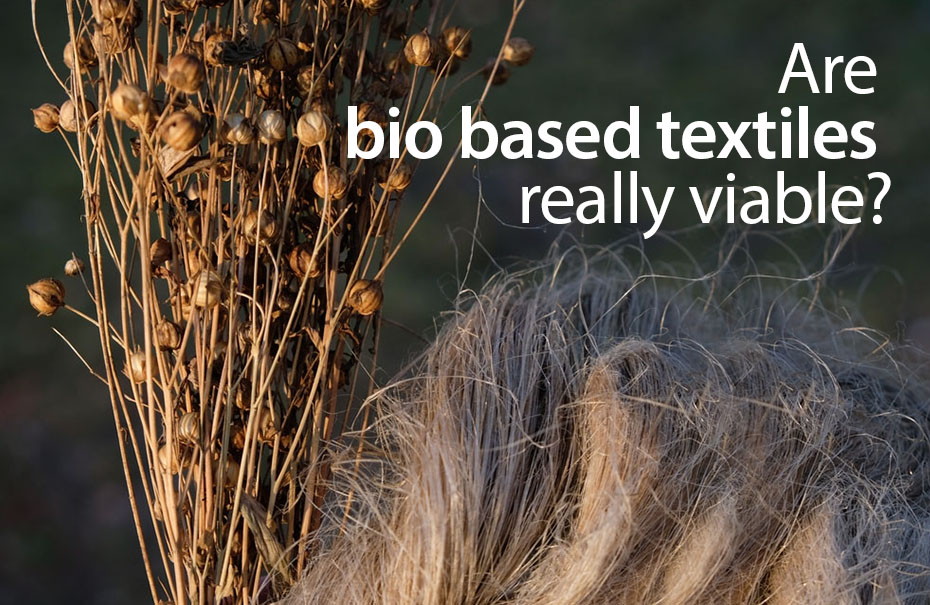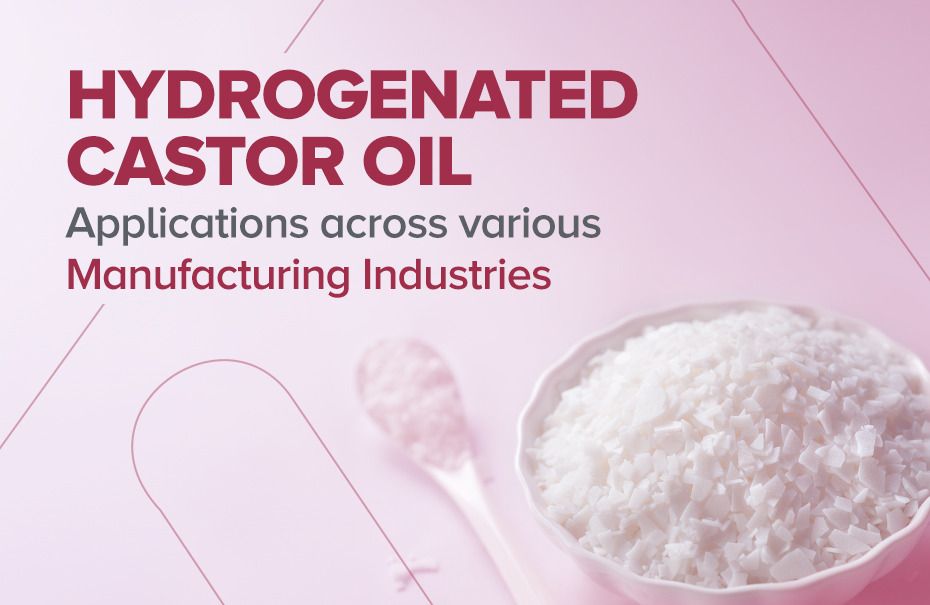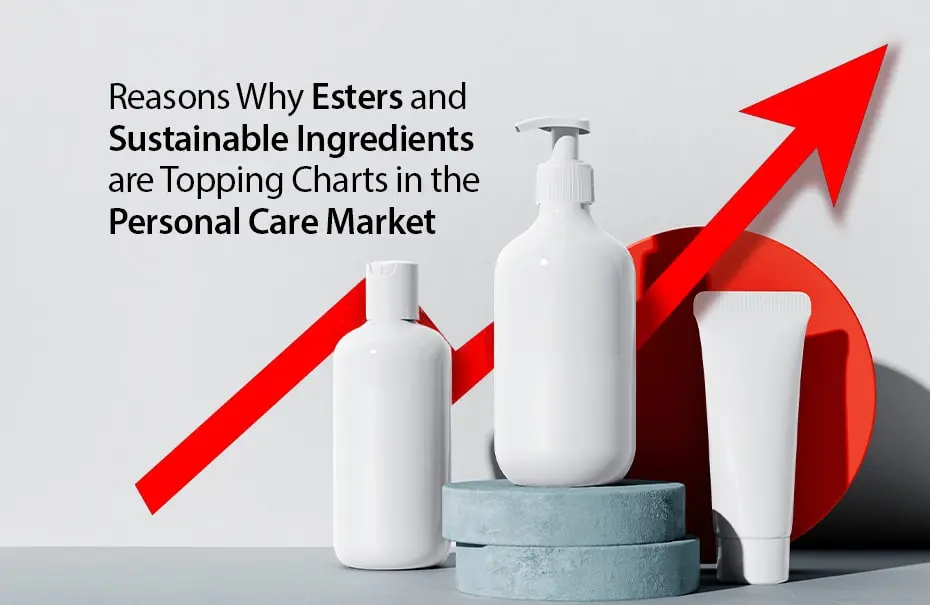Are Bio-based Textiles Really Viable?

We are traveling back to where we started. Confused? Human civilization used vegetation and innovated certain coverings to protect their body from the climatic conditions and danger which evolved into clothes and today we are back again to developing fabric made out of plants. Interesting, isn’t it?
The Need For Green
Sustainable, biodegradable, reusable, eco-friendly, you might be coming across these green terms a lot lately in almost everything from skin and hair care products, packaging, and cutleries, to the most interesting one – Clothes.
We all know how our ancestors invented the art of textile using plants and animal skin to protect themselves from cold, heat, and rain. But later when technology advanced, the textile industry underwent a gigantic change, and today, more than 60% of textiles are made of polyester and other petroleum-derived fibers. So you can imagine the effects on the environment when you discard such clothes. It is filling up the land costing the global economy more than $500 billion every year. Shocking? Wait for the other fashion statistics that we are going to list further and you better grab a seat because that can be difficult to grasp.
- The way the garment usage lifetime is shortening, by 2050, over 150 million tonnes of clothing waste will clog landfills.
- About 20% of global wastewater is the result of textile dyeing.
- Over half a million tonnes of microfiber pollution which is equivalent to 50 billion plastic bottles, is produced in cloth manufacturing that ultimately ends up in the ocean.
- The textile industry is a massive contributor to the 1.2 billion tonnes of greenhouse gas emissions released each year.
- About 92 million tons of clothes-related waste is dumped each year. In fact, every second you’re reading this article, 7.6 to 10 cubic meters of discarded textiles are filling up our Earth.
Hence, it’s high time we need to go green in apparel as well. Don’t worry, we didn’t mean to say that we must start wrapping leaves around our bodies. The solution to this terrifying fashion waste is already here, we just need to make it more commercial and a part of our daily life and that is Bio-based Textiles.
What are Bio-Based Textiles?
Bio-based fabrics are incredible alternatives to the petrol-based fabric. Since, the textile industry is one the major contributors to polluting the environment with carbon dioxide, chemicals, and micro-plastics, the need for high-performance fibres made from plant-based materials is becoming a necessity.
Bio-based textiles are fabrics made from starches, sugars, and lipids extracted from corn, sugar cane, sugar beets, and plant oils using various technologies. Although we have fabrics made of natural materials such as cotton, wool, and silk, they alone are not able to fulfill the rising demand for textiles all over the world. Thankfully, we now have fabric made of castor beans. Yes, you heard it right. The same strong-smelling, viscous, yellow oil that is rich in medicinal benefits but hardly used in our daily life, turns out to be an amazing source for obtaining fibres for textiles as well.
What are Bio-Fibres?
Fibre which is the foundation of textiles is basically thin, thread-like strands that are pulled, twisted, and spun to form yaarn which is then woven on a loom to form a fabric. The fibres for fabric are obtained either from the natural or manmade sources directly extracted from plants and animals such as cotton, wool, jute, and silk, while others are manmade like nylon, rayon, polyester, and polyacrylic which are called synthetic fibres.
Now, the reason synthetic fibres are dominating the textile industry is that they are inexpensive, durable, quick-drying, resistant to wrinkles, and are less color fading but, they are oil-based and cause a high environmental footprint. There comes the saviour – Bio fibres which are basically produced from renewable sources and are more biodegradable, compostable end eco-friendly too in their manufacturing stage.
Bio Fibres From Castor Beans
We already have bio fibres like cotton that are biodegradable, skin-friendly, warm and soft, and moisture-absorbing but there is an issue with it as well. Since cotton has other industrial and household uses in large amounts it requires intensive farming with loads of water for its growth. So, it’s like a fifty-fifty advantages and disadvantages with cotton fabrics. There are also other bio-fibres such as Chitosan, Algae-based, Bacterial cellulose, Collagen, Fibre made from spider silk, Bacteria-based, etc., but, castor bean fabric is totally a different story.
Castor plant is known to be the most water-saving and environmentally friendly plant as it can grow easily without much water and is not used as food which means it does not cause any harmful impact on the food chain for humans or animals. Due to the high oil content, the oil extracted from castor beans is processed to obtain various castor derivatives which are today one of the most important ingredients in the manufacturing process of various industries.
Castor oil comprises eighty-five percent of ricinoleic acid – an aliphatic acid that is not found in any other plant oil. When the extracted castor oil undergoes the manufacturing process, it is purified to produce ricinoleic acid, a key intermediate, which is synthesized through a process of pyrolysis. It is then polymerized, followed by extrusion, to produce polyamide which is then spun into a yarn.
The Properties of Bio Fibres
Bio fibres exhibit the properties of synthetic fibres but are biodegradable, sustainable, and eco-friendly. They are suitable for all textile applications but are an ideal solution for the sportswear sector because a fabric made out of bio fibres are:
- Ultralight
- Quick-drying
- Super stretchable
- Extremely breathable
- Non-iron
- Extremely comfortable
- Not so smelly
- Suitable for all climates
- Comes in various colors and provides maximum mobility.
So, is it Viable?
For any bio-based fabric to be practically and commercially viable, it must exhibit the textural and mechanical properties similar to their non-bio-based counters i.e synthetic ones and as you can see above, they are a fine mix of both natural and synthetic fibres which make them pretty much a viable option to put a stop to the huge textile waste that is been created every single minute.
Moreover, every process of castor oil from its production, extraction to the manufacturing of castor derivatives is not harmful to the environment in any way hence, castor fabric has more than what is required to replace synthetic fibers in terms of usability and sustainability. And we, Ambuja Solvex, the castor oil manufacturers of India take pride in producing such a valuable oil that has the ability to move the fashion industry towards a sustainable and circular paradigm.



